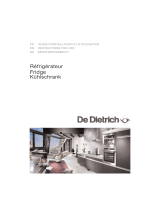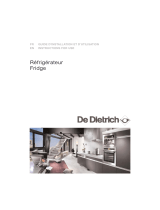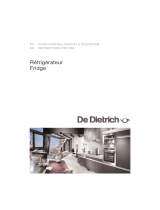
23
This appliance is intended for domestic use only. It has been designed for preserving food.
The following instructions are for your own safety and should be observed without
fail. We can neither be held responsible, nor uphold the guarantee in case of
failure to observe these recommendations, which may lead to material damage or
physical injury.
- This appliance is not intended for use by
persons (including children) with reduced
physical, sensory or mental capabilities, or lack
of experience and knowledge, unless they
have been given supervision or instruction
concerning use of the appliance by a person
responsible for their safety.
- Children should be supervised to ensure that
they do not play with the appliance.
- Your appliance must be installed, fixed if
necessary and used in compliance with the
instructions in this operating and installation
instructions manual in order to avoid any
damage and/or danger due to any lack of
stability or faulty installation.
If the appliance has been delivered
to your home in a horizontal
position, stand it upright and then
wait 2 hours before plugging it in. A
small amount of oil may have
flowed into the refrigeration circuit,
and you must allow time for this to
flow back towards the motor be-
fore connecting the appliance. Fail-
ure to do so may damage the
appliance.
- If you appliance is fitted with castors, please
remember that they are only designed to
assist in small movements. Do not use them
for longer journeys.
- Carry out an initial cleaning operation (see
the section on "Installing your appliance")
before connecting your appliance to the
electrical supply. Disconnect your appliance
prior to performing any maintenance opera-
tion. Grasp the plug directly, instead of
pulling on the power cable.
- Do not use any other method than those we
recommend in this manual for speeding up
defrosting.
- Do not use electrical equipment inside
compartments unless the manufacturer
recommends otherwise.
- Do not let children play with the appliance
and keep your pets well away from it.
- Worn out appliances must be rendered
unusable. Unplug and cut the electric cable
flush with the appliance. Render the door
catch unusable or, better still, remove the
door, so as to ensure that no child or animal
risks being shut inside whilst playing.
- If a problem arises that you are unable to
resolve using the advice given (see the
"Noise, inconveniences, minor breakdowns"
section), please contact an official after-sales
service or a qualified professional.
Your appliance's refrigeration circuit
is filled with isobutane refrigerant
(R600a), a natural, non-polluting gas
that is, however, inflammable. Ensure
that none of the components in your
appliance's refrigeration circuit have
been damaged during transport or
installation. If you detect any damage,
keep your appliance away from flames
or any type of source of heat or
combustion and ventilate it location.
Safety instructions
EN























